We hear it all the time: Recycle; reduce your carbon footprint; do your part. But how do you know if your choices are really making a difference? When I was living in Somerville, Massachusetts, my monthly energy bill compared my usage to my neighbors. I loved seeing that I was using less energy than the households around me, and it was an incentive to keep working toward lightening my impact on the environment. Now that I live in Chicago, that measurement is gone, and I still don’t know how much exactly my lifestyle choices outside of the home are reducing my contributions to climate change.
But thanks to the UN, I just came up with a number — in about five minutes. With today’s launch of the Climate Neutral Now initiative, the UN is encouraging businesses, governments and individuals to mind their impact. (They’re using the term “climate footprint.”) The announcement came with celebrity endorsements (Ed Norton!) and big business backing (Microsoft). Best of all, there’s a new online calculator that lets you “estimate the greenhouse gas emissions generated in your day-to-day life.”
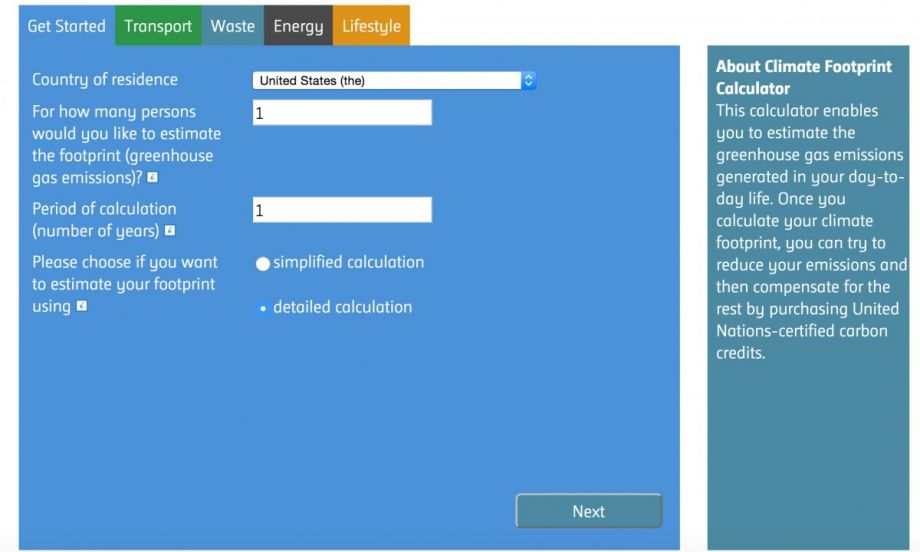
(Credit: United Nations)
After entering some basic data, you’ll have to calculate the average number of miles you travel using various modes of transportation. My numbers are pretty low here because it’s not winter, so I’ve been riding my bike everywhere. Chicago is a pretty bike-friendly city.
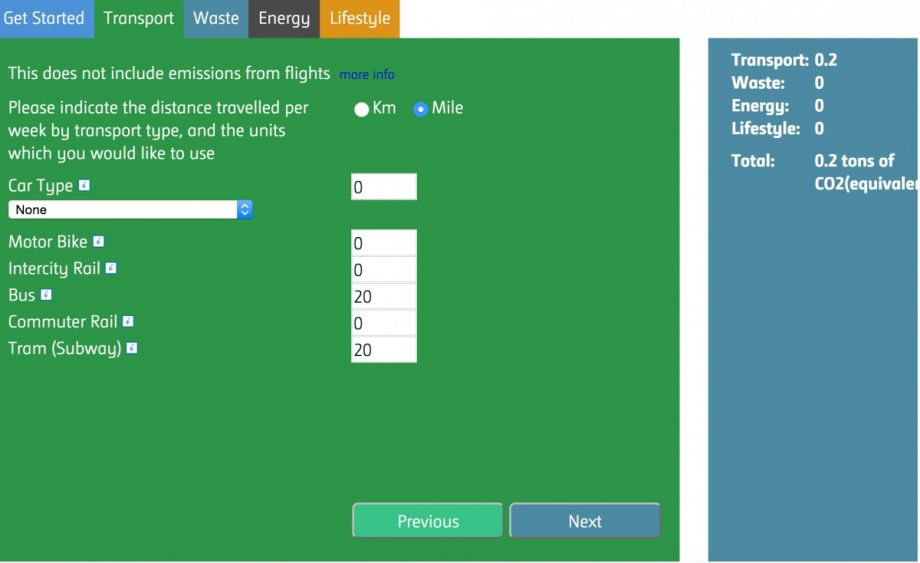
(Credit: United Nations)
In addition to transportation, you’ll answer questions about your diet, shopping habits and home energy usage. It’s easy to calculate your average daily or monthly energy usage. Check your utility bill.
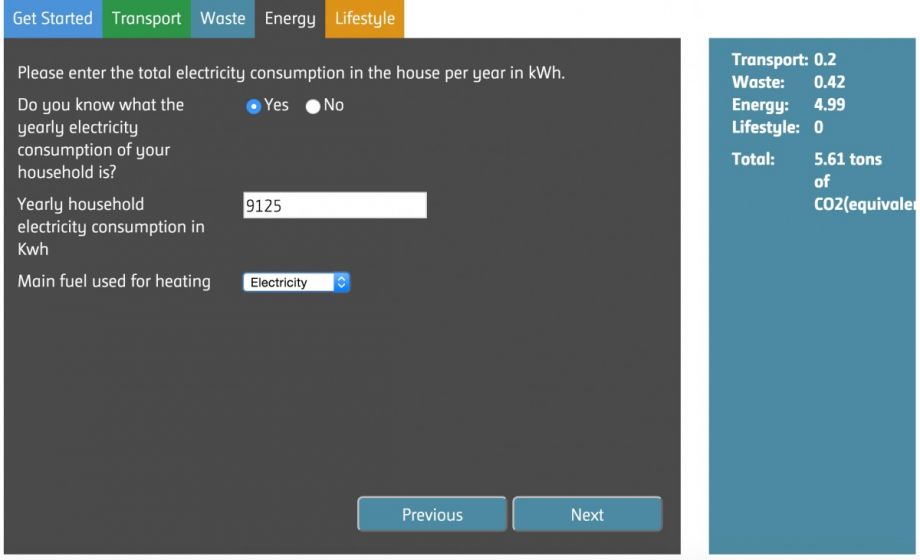
(Credit: United Nations)
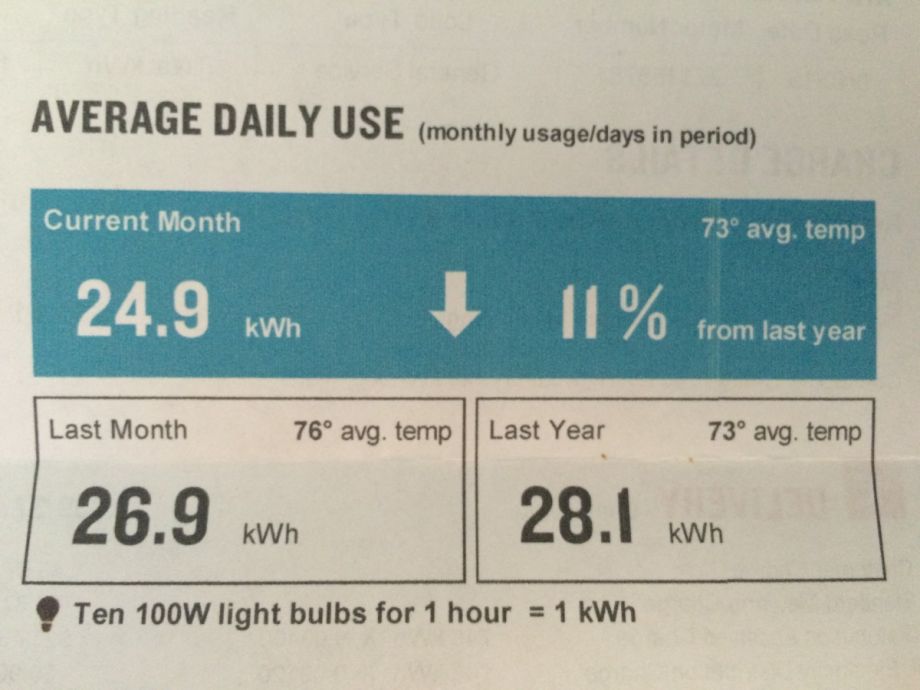
Compared to the average North American footprint of 20 tons of CO2, my numbers look good, but I could still do more to get closer to the average global footprint which is about four tons. The calculator gives suggestions for reduction and even allows users to select from a range of UN-verified emission reductions for offsetting.
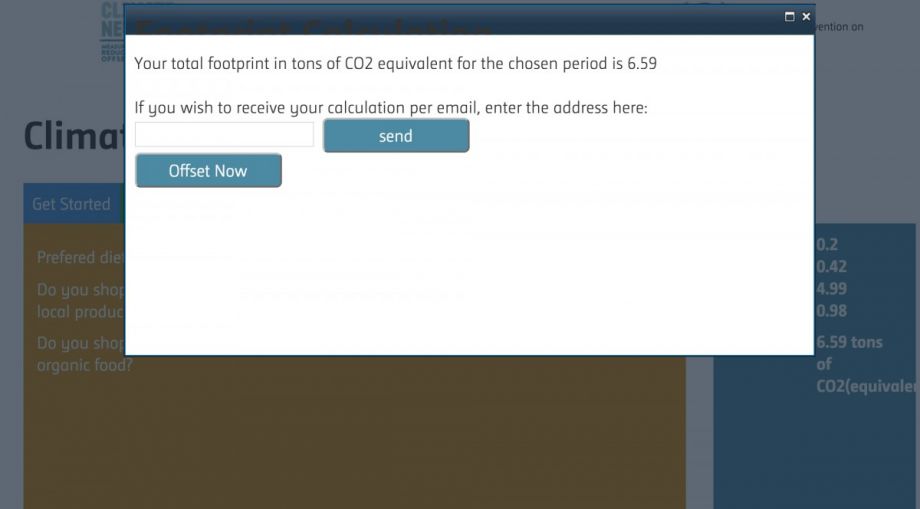
(Credit: United Nations)
So no more excuses. Get on the scale. And, if you care to brag, share your number in the comments section below.
Jenn Stanley is a freelance journalist, essayist and independent producer living in Chicago. She has an M.S. from the Medill School of Journalism at Northwestern University.
Follow Jenn .(JavaScript must be enabled to view this email address)
















